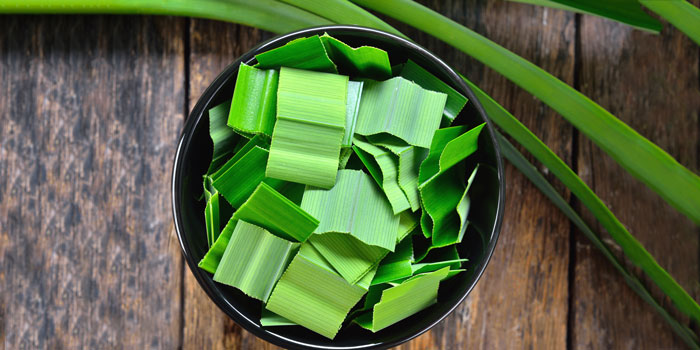
Pronounce it: pan-dan, sometimes pan-dah-nus
Pandan is another name for the screw pine tree and its lanceolate, aromatic leaves are used in both sweet and savoury cookery. Nutty and green-tasting with sweet, velvety overtones, it is widely used in Sri Lanka, Myanmar, Thailand and most other South Asian and South-East Asian countries, including Malaysia and Indonesia. It is said to be as important, popular and widely used as vanilla is in Western cuisines.
Pandan leaves are used to perfume rice and curries and crushed and soaked to create flavourings and colouring for cakes and such. The leaves are widely used as a fragrant wrapping for baked or grilled foods, especially chicken. In Thailand the leaves are known as ‘bai toey’.
Pandan leaves are not widely available in the UK. It is easier to buy a flavouring/essence from Thai shops, called ‘rampe’ (pronounced ram-peh).
Availability
Fresh or frozen pandan leaves are very rarely available in the UK but the essence can often be found in ethnic shops, especially Thai specialists.
Choose the best
If you manage to find them, fresh or frozen pandan leaves should be evenly coloured and show no sign of insect damage or infestation. Rampe essence will usually have green colouring added.
Store it
Fresh leaves should be stored in sealed containers or bags with just a sprinkle of water, otherwise freeze them in small portions. Keep rampe essence refrigerated once open.
Cook it
If you find fresh or frozen leaves, add a few when cooking plain rice to give it the flavour of basmati. Otherwise, use them as a wrapping wherever you might use banana or other leaves – but don’t eat them. In sweet cookery and baking, rampe essence is used wherever you might choose vanilla and is especially good with anything creamy, like ice cream.
Be the first to comment on "Pandan"